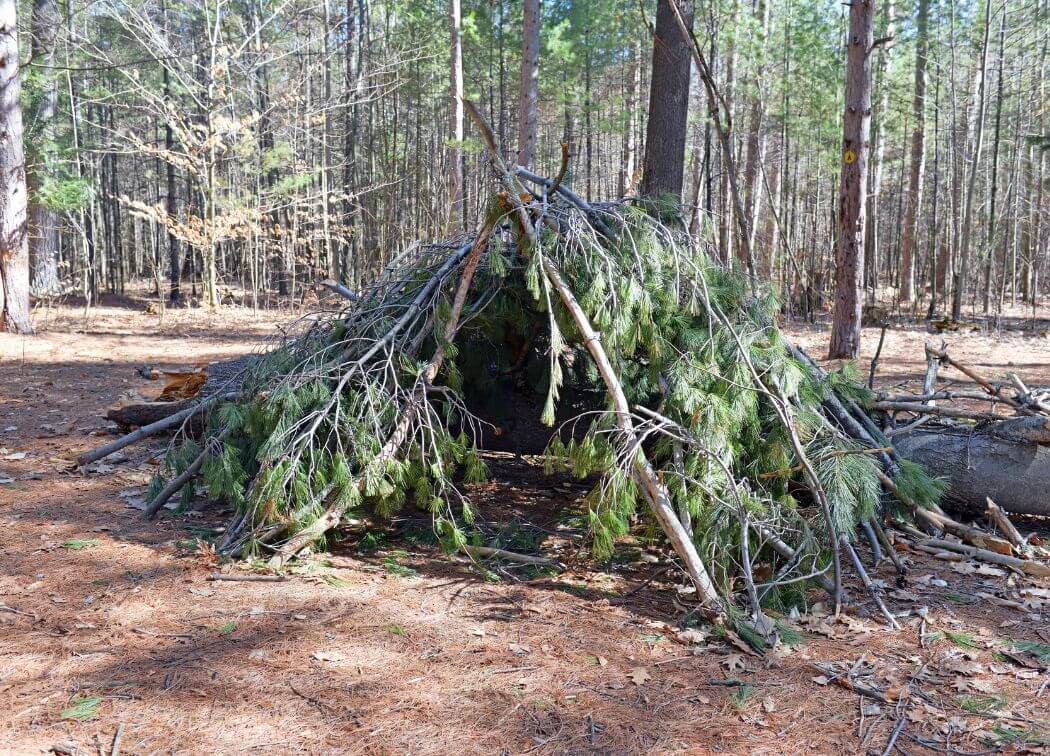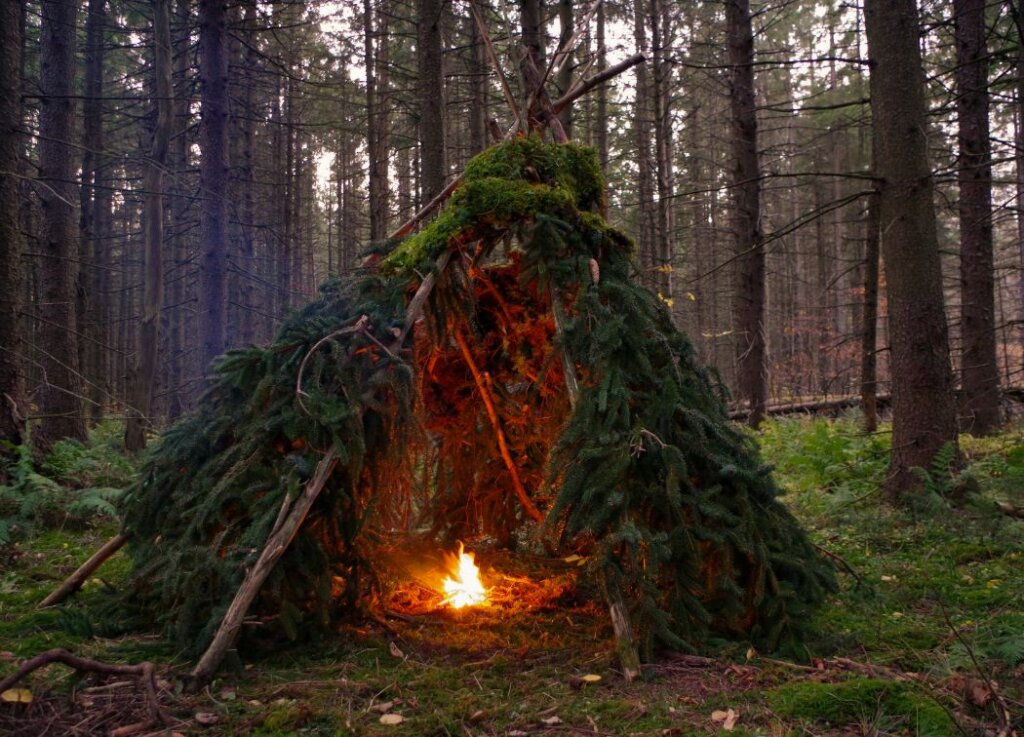Wilderness Survival Shelter Guide
Shelter. In a SHTF situation, you have to know some basic information and items you already have to make your temporary home.
We all need shelter to protect us from the outside elements.
We need it to keep us dry and warm while outside.
Sometimes you may not have basic materials with you like tarps, rope, and space blankets.
So it is important to learn how to build at least one of these types of shelters.
These shelters may not be as nice as a five-star hotel, but at least they will keep you alive.
Today we’re going to take a look at some of the key considerations to take.

Location
You have to think about a good place to build your shelter before you begin construction. You should always avoid these types of areas:
- Anywhere with a damp ground
- Mountaintops or open ridges (you will be exposed to cold winds)
- Narrow valleys (cold gathers at night)
- Ravines or canyons where water runs
Always be aware of what’s around: look for objects that could fall on your shelter or nearby animal nests that could attack you.
It’s also highly recommended to build in a close radius of your materials that will be utilized. This not only includes your building materials such as branches and leaves, but also your water and food sources.
Building your shelter too far from your necessary resources requires you to use too much needed energy to travel to and from them.
Know When To Build
Be sure to give yourself enough time to build your shelter. Nobody wants to be stuck without shelter for the night, especially on cold, wintery nights.
It’s best to start no later than two hours before sunset, but be mindful that it gets darker faster with the canopy of trees giving the extra shade. If you are in a forest with a thick cover overhead, it’s best to start even earlier.

Types of Shelters
There are several types of shelters you could construct in survival situations. To make it easier for you, we have narrowed down to four common, simple types.
1. The Fallen Tree
It is practically a given that you will come across fallen trees. This makes for the simplest shelter, as long as there is enough room for you to crawl under.
Find some branches around the area and lean them against the tree on the windward side, forming a wall and sheltering you from wind. If you have it thick enough it will be a wind barrier. Should you be able to start a fire, build one on the open side of the shelter to add warmth.
2. The Cocoon
If you are in a hurry to build your shelter and nighttime is creeping up, quickly gather dry debris such as leaves and bark around the ground.
Pile it up a few feet taller and longer than your height. This forms a sleeping bag of nature when you burrow inside, and helps contain your body heat.
3. The Lean-To
Possibly one of the more known shelters, a lean-to is fairly simple to make. Find a place to prop fallen limbs against (smaller fallen trees, boulders, small overhangs) and gather some.
Prop the limbs against what you came across, creating a wall to shield from rain and some wind. Use leaves, bark, pine needles, and whatever else you can find to cover the limbs and provide warmth inside the shelter. Simply crawl inside and you are settled.
Try to keep the shelter no bigger than you are. Smaller spaces result in more warmth being kept inside. Just as we mentioned with the fallen tree shelter, you could place a fire near your shelter for extra warmth.
4. The A-Frame
An A-frame shelter consists of two longer sticks (roughly four to five feet in length) and one stick ten to twelve feet in length. Make the letter A by propping up the two shorter sticks, and prop the longer stick atop the A.
Use vines, a belt, or some other material to tie the three sticks where they meet. Once you have your A-frame tent, prop more sticks along the sides and cover the shelter with debris to insulate your shelter.
Building A Bed
The final step is to make your shelter complete by constructing a bed to lie in. Dry leaves are great material to use.
Make your bed a few inches thick and slightly larger than the space of your body. Now you can snuggle in your makeshift bed and wait out the night.
Final Thoughts
Remember to always be sure to build in a location relative to your necessary materials, and be sure to know what is around your future shelter area. The last thing you want is waking up to a snake slithering his way next to you.
Also be mindful of the time of day. The forest gets dark before the outside world, so ensure you have enough time to construct your place of shelter for the night.
Fire is always a nice option to stay warm, or even make your shelter warmer. For your safety, do not put the fire right at your shelter. Ideally, place your fire a few feet away from your shelter.






